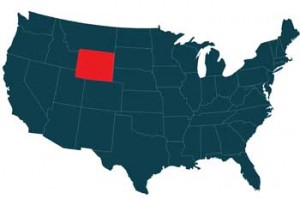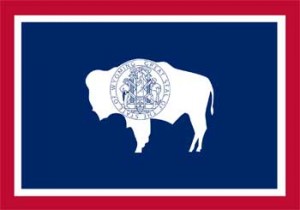Wyoming Emergency Vehicle Light State Statutes
 In the state of Wyoming, there are statutes that govern the use of warning lights by emergency vehicles. If a person meets the requirements for an occupation or vehicle, and they also meet the circumstances outlined in the statute, they can use lights to warn drivers on the road about their presence.
In the state of Wyoming, there are statutes that govern the use of warning lights by emergency vehicles. If a person meets the requirements for an occupation or vehicle, and they also meet the circumstances outlined in the statute, they can use lights to warn drivers on the road about their presence.
Wyoming's definition of emergency vehicles is outlined in the state statute 31-5-106. According to this statute, emergency vehicles include any vehicle that a police officer or firefighter drives. The statute also extends to cover vehicles driven by EMTs and volunteer firefighters.
Police Lights
In Wyoming, police lights don't have restrictions regarding their colors. The law regarding police lights can be found in state statute 31-5-928(e). This statute states that law enforcement officers are required to use the emergency lights on their vehicles when responding to an emergency. These lights are the best way for a law enforcement official to be noticed, especially in circumstances with low visibility.
When a police car turns on its emergency lights, the drivers in front of the car must pull to the side of the road, provided it is safe to do so. This gives the emergency vehicle room to pass and arrive at the emergency more quickly.
Firetruck Lights
Unlike police vehicles, fire trucks do have color restrictions. A fire truck must use at least one red light. This requirement is outlined in the same law, state statute 31-5-928(e).
As long as a fire truck includes one red light, the warning lights can have a variety of additional colors. It's optional for a fire truck to use white, amber, or blue lights to increase their visibility. These are the only colors approved for fire trucks according to Wyoming law.
Volunteer Firefighter Lights
The laws regarding volunteer firefighters are similar to those outlined for fire trucks, although there are some differences. Wyoming statute 31-5-928 discusses general lighting restrictions for different types of vehicles.
If a volunteer firefighter is driving a privately-owned vehicle, they must provide emergency lights when en route to an emergency. Each vehicle requires one light that flashes amber, red, or blue. Private vehicles are strictly prohibited from flashing blue lights, as these are restricted to use by authorized emergency vehicles only.
The light must be powerful enough to be seen within 500 feet of the vehicle in clear weather.
Ambulance Lights
Like fire trucks, ambulances are required to use at least one red light. The red color indicates that the vehicle is responding to a time-sensitive emergency. Red ambulance lights tell motorists to get out of the way as fast as possible.
According to state statute 31-5-928(d), an ambulance must have at least one red warning light, visible from at least 500 feet away in clear weather. It's optional for ambulances to have additional amber, white, or blue lights, provided they've fulfilled the red light requirement.
Tow Truck Lights
 A tow truck is considered to be a vehicle belonging to a civil emergency preparedness agency. These trucks intervene when motorists have emergencies that require their vehicle to be dragged from the road for repairs. They also play an important role in the cleanup of motor vehicle accident scenes.
A tow truck is considered to be a vehicle belonging to a civil emergency preparedness agency. These trucks intervene when motorists have emergencies that require their vehicle to be dragged from the road for repairs. They also play an important role in the cleanup of motor vehicle accident scenes.
If a tow truck is responding to an emergency, the driver is required by state statute 31-5-928(f) to display amber and white flashing lights. These indicate that an emergency procedure is being undertaken, but that the emergency isn't life-or-death. Drivers who see these lights should move over one lane if it is safe to do so.
Tow trucks must display their warning lights while in the process of towing a vehicle, as well as during the journey to the emergency site.
Construction Vehicle Lights
According to state statute 31-5-910, construction vehicles are all required to have lighted lamps along with illuminating devices. These lamps must be used in circumstances where natural light is insufficient for visibility. They must also be used in the period 1/2 hour after sunset to 1/2 hour before sunrise.
The color of the lights varies depending on the construction vehicle. Generally, construction vehicles will use white and yellow lamps, similar to an average car's headlights. These vehicles will not be permitted to use blue or red emergency indicators.
If a construction vehicle is using a powerful lamp, and this lamp's intensity measures more than 300 candlepower, the driver is prohibited from aiming the lamp at an angle that strikes the roadway. The one exception is if the construction vehicle and the vehicle on the roadway have a distance shorter than 75 feet. These circumstances are outlined in Wyoming statute 31-5-928.
Utility Vehicle Lights
A utility vehicle belongs to a public service corporation. As such, its warning light usage is defined in state statute 31-5-928(f). When a utility vehicle responds to an emergency, the driver is required to display amber and white flashing lights.
Utility vehicles are most commonly utilized by power companies. People often see them cleaning up downed wires and electrical damage after storms and natural disasters. Because the vehicles often work in the roadway, or at least in close proximity to it, it's important that the warning lights be used. The amber and white coloring lets motorists know to use caution and move over one lane when possible.
Pilot Vehicle Lights
When a vehicle escorts an oversized load, the driver is required to use warning lights to caution other motorists. According to Wyoming statute 31-18-802, an escort vehicle must use amber warning lights.
There are several types of amber light that a vehicle can display. One is a flashing and revolving amber light mounted atop the vehicle. Another is an amber strobe light. The final option is a pair of flashing amber lights that are visible from all lanes of the road.
Each light is required to have a diameter of at least 4 inches. It must also have a visibility of a minimum of 500 feet from both the vehicle's front and back.
Security Vehicle Lights
Security vehicles, such as the ones belonging to mall police, are not covered under Wyoming's definition of emergency vehicles. They are not required to display warning lights for passing motorists. However, they are required to abide by all general laws regarding vehicle lighting.
This means that every security vehicle must use its headlights under inopportune lighting conditions. The headlights must meet the minimum requirements for visibility at night and in dim lighting. Headlight regulations are enforced by the Wyoming Department of Transportation.
For more information about what lights may be available to you, we suggest calling your State Highway Patrol office at: 307-777-4321
*Please note that these numbers are what we are currently able to find and the numbers may have changed since this listing.
Disclaimer: The emergency vehicle light state statute guide was created by Extreme Tactical Dynamics as a guide and reference. We make no claim to the accuracy or validity of this guide. This guide was written to the best of our knowledge and has been provided to our customers as a courtesy ONLY! The information in this guide is our interpretation of the law as we have read it. We cannot be held responsible for any errors as this is only our interpretation of the law and the laws are constantly changing. We cannot be held liable or responsible for any errors and recommend that our customers refer to their local authorities to confirm the particular statue that governs their use of emergency vehicle lights.
 Facebook
Twitter
Google+
Instagram
YouTube
Facebook
Twitter
Google+
Instagram
YouTube


